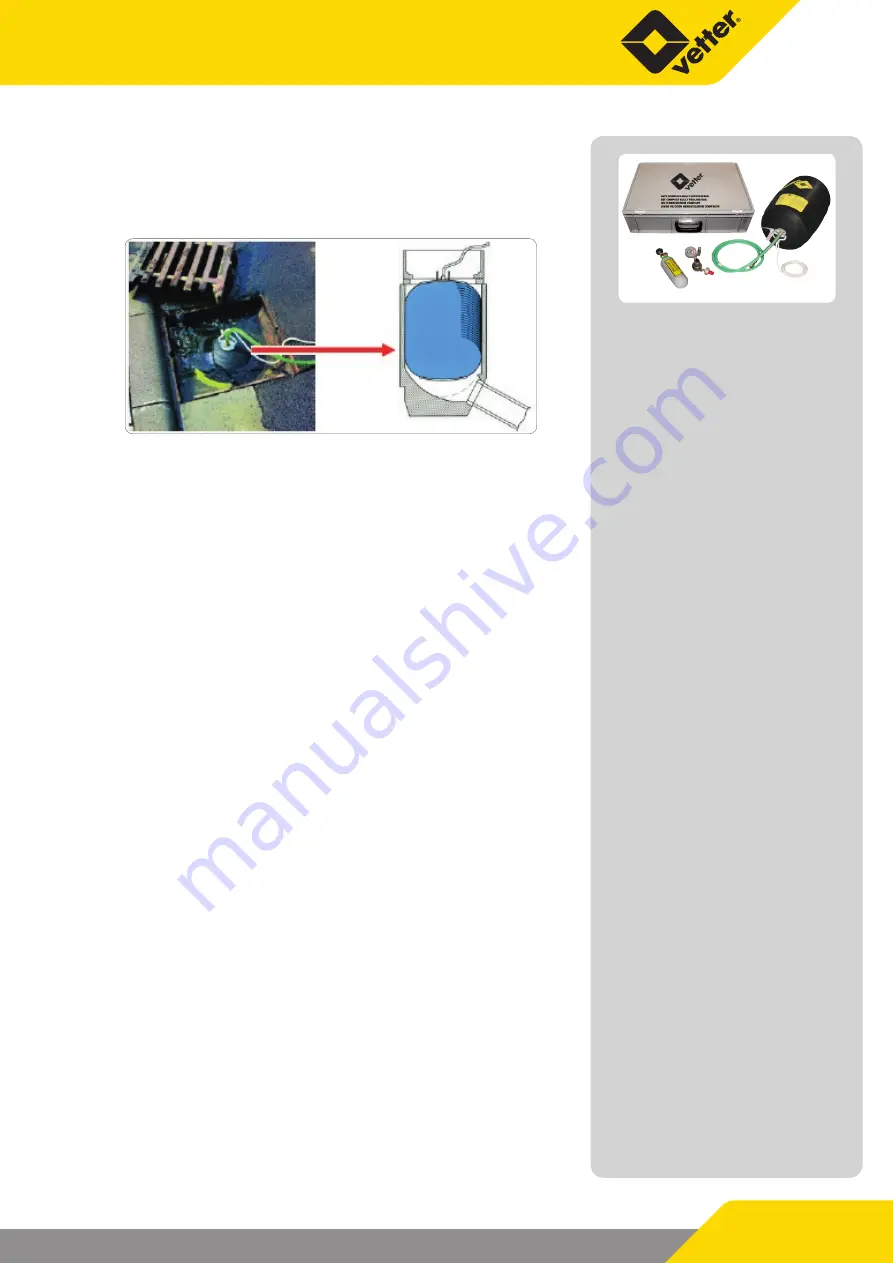
Page 35/39
15.2 Compact Gully Sealing Bags
Sewer channel inlets can be quickly sealed with the Vetter Com-
pact Sealing Bag when liquids dangerous for the environment th-
reaten to flow into the sewer network.
9
Firstly remove the cover of the gully and then withdraw the
dirt collection filter which may be situated underneath.
9
Connect the inflation fitting and safety fitting to the com-
pressed air bottle.
9
Couple the quick connection coupling of the bag inflation
hose to the nipple of the inflation fitting and safety fitting.
9
Lower the Compact Gully Sealing Bag with inflation hose into
the open gully using the securing line so that the centre of
the bag is situated in the round area of the inlet; if necessary,
firstly inflate the bag slightly until it has a cylindrical shape.
9
Slowly open the compressed air bottle by turning the hand
wheel.
9
Monitor the maximum operating pressure of the bag on the
manometer.
9
As soon as the bag is positioned in the round area of the inlet
and seals (at a maximum of 0.5 bar) close the compressed air
bottle by turning the hand wheel to the stop.
9
Place the bottle with inflation fitting outside the area of the
liquid and, if necessary, seal the next gully with another bag.
9
After bag operation, deflate and withdraw it from the gully
using the securing line.
9
Clean the bag and accessories and inspect for possible dama-
ge. Rub the bag over with talcum powder and roll it up star-
ting from the bottom to the top. Close the safety valve.
9
Determine the pressure reserve remaining in the bottle and, if
necessary, have the bottle refilled.
9
Connect the refilled bottle again to the inflation fitting and
safety fitting.
9
Pack the complete connected Compact Gully sealing Bag
system (bag, inflation hose, inflation fitting and safety fitting,
compressed air bottle) into the transport case.



















